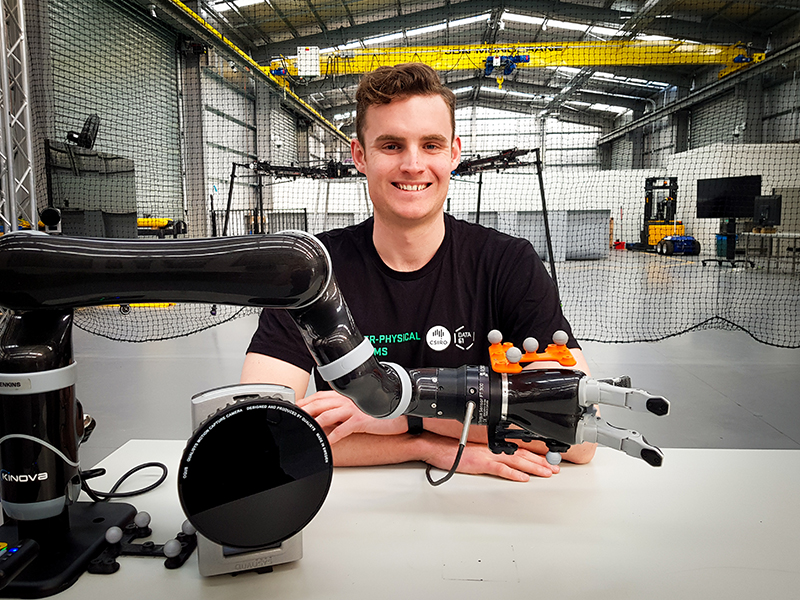Motion capture to close the robotic reality gap
QUT 2019 Robotronica’s story on Jack Collins, one of our PhD students currently undertaking his work under the supervision of Dr David Howard from CSIRO Data61 as well as QUT researchers Dr Ross Brown and Dr Juxi Leitner.
Utilising CSIRO’s Data61 state-of-the-art Robotics Innovation Centre’s motion capture system, Jack works in the realm of ‘sim2real’ which looks to overcome a phenomenon called the ‘reality gap’.

CSIRO Data61 & QUT PhD researcher Jack Collins.
“The problem is that if we teach a robot a new skill in a physics simulator and then transfer this new skill onto the real robot we don’t see the robot successfully perform the skill as we did in the simulator”.
“An example of the reality gap might be if we teach a robot in simulation to pour drinks into glasses, it might be able to do this task 100% of the time in simulation but when we try to transfer this behaviour to a real robot it is only able to do the task 70% of the time”.
“My research looks at how we can improve the real-world performance of the robot to something comparable to the simulator.”
“We are trying to quantify the differences between the simulators and real-world using motion capture. We can use this information to improve the areas where simulators fail,” Jack said.
“Teaching robots in simulation is safer, avoids breaking or damaging robots, and we can run simulations faster than real-time.
“We can also use robots in a simulation that we don’t have access to in the real world.”
- Kinova Mico2 robotic arm at CSIRO’s Data61 Robotics Innovation Centre motion capture system.
- Kinova Mico2 arm.
You can read the full story originally published by QUT Robotronica here.
[jetpack_subscription_form title=”Subscribe to our News via Email” subscribe_text=”Enter your email address to subscribe and receive notifications of new posts by email.”]


